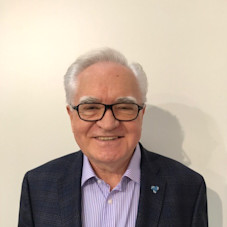Due to the war in Ukraine, the industrial and economic landscape in Central and Eastern Europe continues to change beyond recognition. The gap between the EU Central European countries and Eastern Europe proper has never been greater. In business, over 1,000 international companies have publicly announced they are voluntarily curtailing operations in Russia beyond the bare minimum legally required by international sanctions. According to the Yale School of Management, some 200 companies have continued to operate undeterred, but Western manufacturing is effectively out of Russia. Their domestic manufacturing industries are struggling, primarily due to the lack of advanced components and replacement parts, as the country’s market for machine tools, worth $1.5 to $2 billion, is no longer being served by the West.
Central European countries are increasing their economic ties with the West, making good prospects for machine-tool builders and manufacturers of associated technology. The largest potential for companies either participating in direct sales of manufacturing technology or benefitting from the supply chain opportunities offered by international corporations is found in the Northern Central European Five countries (Poland, Czechia, Slovakia, Hungary, Romania), in Southern Serbia and Macedonia in the Balkans, and even Turkey, which is only loosely connected with Europe. Potential is strong, especially in automotive, energy, defense, and, in some markets, aerospace.
These markets for machine tools and equipment, together with the markets found in the region’s smaller countries and Turkey, are worth between $2.3 and $2.5 billion – up to $3 billion in a good year. Poland, Czechia, and Turkey lead in consumption. Of all these countries, only Czechia has its own all-around machine tool industry, and partly involved in it are Poland and Turkey, with even smaller input from Romania and Bulgaria. None are close to being able to satisfy their domestic demand.
The region is strong in automotive. Some 20% of European cars are made here. Poland, Czechia, Slovakia, Hungary, Romania, Serbia, and Turkey produce personal vehicles. Poland, Czechia, Hungary, and Turkey make some quantities of trucks or buses. Most of the countries in the region manufacture auto components, and some have hundreds of such factories.
German, French, Japanese, or Korean companies do not have easy to access to these automotive markets in Central Europe. However, car manufacturers with U.S. content are there; Stellantis is based in Poland, Slovakia, Serbia, and Turkey; Ford is in Romania and Turkey. Stellantis has six manufacturing locations in Poland and has just begun making EV Jeeps in the largest plant formerly under FCA Fiat. They are converting the FCA factory in Serbia into an EV manufacturer and modernizing the factories in Turkey. Ford is the largest U.S. investment project in Romania and makes a good range of vans in Turkey. GM plans to return to Europe and is eyeing Central Europe.
Auto components producers are numerous in Central Europe and are comprised of predominantly small and medium-sized enterprises. But really big players are active as well, such as American companies like American Axle, Aptiv, Borg Warner, Lear, ZF (formerly TRW), Johnson Controls, GE, Flextronics, and Johnson Matthey. Mergers and acquisitions have particularly been buoyant in recent years. Aptiv, Borg Warner, and Lear continue growing, while Delphi or TRW have disappeared, and Johnson Controls has reduced its portfolio.
Energy sourcing has become particularly problematic for the region, as it was dependent on Russian supplies of oil and gas. With that energy source effectively closed off, a lot of activity to obtain a diverse energy mix is taking place. Renewables with low-carbon sources are on the rise; tankers dock at countries with access to the sea; gas interconnectors and storage facilities are hastily being built; and some coal energy capabilities have been resurrected. Nuclear power is roaring back. Hungary and Turkey are in the advanced process of constructing their first power plants. Romania is going to install new reactors in its existing plant. Bulgarian reactors are going to be modernized. Poland has just selected Westinghouse to build its first nuclear power plant.
The region has allocated much more money on defense capabilities, increasing spending from 2% to 2.5% or even 3% of GDP. Some countries are in the market to buy new gear – such as Poland, which has made a strong commitment to buy from the United States and plans to spend some $130 billion by 2035. Romania has become the first country in the region to have a Patriot missile system. Other countries, like Turkey, increased their own output to become independent. However, all these countries have their own armament industries, which are all being renovated, and are placing more emphasis on developing domestic manufacturing alongside inevitable outsourcing.
The aerospace sector of the region boasts nearly 150 manufacturers and total industry revenues of over $2.5 billion in Poland. Some prominent Polish aerospace manufacturers are owned entirely or substantially by parent companies in the United States and Europe. U.S. manufacturers are represented in Poland by Sikorsky, Pratt & Whitney, Goodrich, Raytheon, Lockheed Martin, and others. The star factory, Pratt & Whitney APU Engine Centre in South-East Poland, has so far produced over 2,000 units for all leading aircraft makers of Europe and the United States, and Black Hawk helicopters are also made in Poland. Aircraft building is also represented in Czechia with some 40 factories, including such U.S. companies as Honeywell, Bell, GE Aviation, as well as a prominent holding of Aero-Vodochody, which is currently Czech-owned. Romania has several factories and intends to build a plant to produce Puma helicopters and manufacture parts for Embraer and Airbus with Sonaca. GE Aviation already has a factory in Romania. Poland, Czechia, and Romania are involved in subcontracting to leading U.S. manufacturers and to Airbus. Turkey, recently famous for its drones from private company Baykar, has five aerospace companies led by state-controlled TUSAS.






